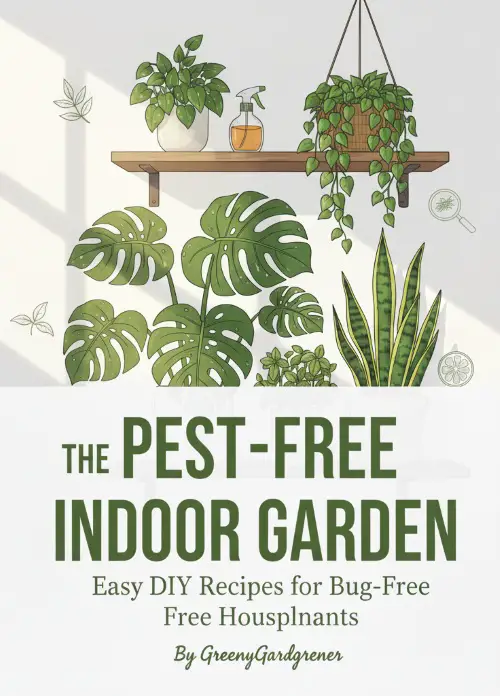Are Pothos Low-Light Plants? A Deep Dive Into Their Lighting Needs
Pothos plants, or Epipremnum aureum, are among the most popular indoor plants due to their low-maintenance nature, air-purifying abilities, and lush appearance. However, a common question among plant enthusiasts and pet owners is whether pothos plants are poisonous.
In this comprehensive guide, we delve into the toxicity of pothos plants, their effects on humans and pets, and essential safety precautions for keeping them in your home.
What's On the Page
- 1 Are Pothos Plants Toxic?
- 2 Understanding Calcium Oxalate Crystals in Pothos
- 3 Symptoms of Pothos Poisoning in Humans and Pets
- 4 What to Do if Pothos Is Ingested
- 5 How to Keep Pothos Plants Safely in Your Home
- 6 Are All Parts of the Pothos Plant Poisonous?
- 7 The Benefits of Pothos Despite Their Toxicity
- 8 Preventing Accidental Ingestion of Pothos
- 9 FAQs About Pothos Toxicity
- 10 Conclusion
Are Pothos Plants Toxic?
Yes, pothos plants are considered mildly to moderately toxic to humans, cats, dogs, and other animals if ingested. The toxicity is primarily due to the presence of calcium oxalate crystals, which are sharp, needle-like compounds embedded in the plant tissues. These crystals can cause irritation and discomfort when they come into contact with the skin or mucous membranes.
Understanding Calcium Oxalate Crystals in Pothos
How Calcium Oxalate Crystals Affect the Body
When plant tissues are chewed or ingested, the calcium oxalate crystals are released, leading to mechanical irritation in the mouth, throat, and digestive system. These crystals can cause pain, inflammation, and other symptoms depending on the amount ingested and the sensitivity of the individual or animal.
Why Pothos Uses Calcium Oxalate Crystals
In nature, these crystals act as a defense mechanism, deterring herbivores and pests from consuming the plant. While they are effective at protecting the plant, their effects can be harmful to humans and animals.

🌿 The Companion Planting & Gardening Book (eBook)
Bigger harvests, fewer pests — natural pairings & simple layouts. $2.40
Get – $2.40
🪴 The Pest-Free Indoor Garden (eBook)
DIY sprays & soil tips for bug-free houseplants. $1.99
Get – $1.99Symptoms of Pothos Poisoning in Humans and Pets
Symptoms in Humans
For adults and children, ingestion or direct contact with pothos may lead to:
- Mouth irritation: Burning or stinging sensation in the lips, tongue, and throat.
- Difficulty swallowing: Swelling in the mouth or throat may make swallowing painful.
- Nausea and vomiting: Gastrointestinal upset after ingestion.
- Skin irritation: Redness, itching, or rashes upon handling the plant sap without gloves.
Symptoms in Cats and Dogs
Pothos poisoning in pets is often more concerning due to their smaller body size and increased sensitivity. Common symptoms in pets include:
- Drooling: Excessive salivation due to oral irritation.
- Pawing at the mouth: Discomfort in the mouth or throat.
- Vomiting and diarrhea: Gastrointestinal distress.
- Lethargy: A general lack of energy and activity.
- Difficulty breathing: In severe cases, swelling in the throat may lead to respiratory distress.
What to Do if Pothos Is Ingested
For Humans
- Rinse the Mouth: If ingested, rinse the mouth thoroughly with water to remove any plant residues.
- Drink Water or Milk: These can help soothe irritation in the throat.
- Seek Medical Advice: Contact a healthcare provider, especially if symptoms are severe or persist.
For Pets
- Remove Access to the Plant: Prevent further ingestion by relocating the plant out of reach.
- Rinse Their Mouth: Use water to gently clean any plant debris from their mouth.
- Contact a Veterinarian: Provide details about the plant and symptoms for appropriate treatment.
How to Keep Pothos Plants Safely in Your Home
1. Place Plants Out of Reach
Position pothos plants on high shelves, hanging baskets, or areas inaccessible to children and pets.
2. Use Barriers
Consider using plant covers or protective barriers to prevent curious pets from nibbling on the leaves.
3. Educate Household Members
Teach children about the dangers of chewing or handling houseplants. Supervise young children in areas with plants.
4. Wear Gloves When Handling
When pruning or repotting pothos plants, wear gloves to avoid skin irritation caused by the plant’s sap.
5. Choose Alternative Plants
If you’re concerned about safety, opt for non-toxic alternatives like spider plants, parlor palms, or calathea species.
Are All Parts of the Pothos Plant Poisonous?
Yes, all parts of the pothos plant—including the leaves, stems, and roots—contain calcium oxalate crystals. Even small quantities can cause irritation, so it’s important to handle the plant with care.
The Benefits of Pothos Despite Their Toxicity
While their toxicity may be concerning, pothos plants offer several benefits when handled responsibly:
- Air Purification: They help filter indoor air, removing toxins like formaldehyde and benzene.
- Low Maintenance: Pothos thrive in various light conditions and require minimal care.
- Aesthetic Appeal: Their trailing vines and vibrant foliage add beauty to any indoor space.
Preventing Accidental Ingestion of Pothos
1. Identify the Plant
Label pothos plants clearly to inform visitors and caregivers of their toxicity.
2. Train Your Pets
Use deterrents like bitter sprays or pet training techniques to discourage animals from chewing on plants.
3. Be Vigilant
Regularly inspect your home for fallen leaves or plant debris that pets or children might access.
FAQs About Pothos Toxicity
1. Can pothos cause long-term health issues?
Pothos poisoning rarely results in long-term health problems. Symptoms usually subside within 24-48 hours with appropriate care.
2. Are pothos toxic to fish or reptiles?
Yes, pothos are toxic to aquatic animals if placed in aquarium setups where they can be ingested. Exercise caution when using pothos in vivariums or terrariums.
3. Can pothos toxicity be fatal?
While highly unlikely, severe cases of poisoning—especially in pets—require immediate medical attention to prevent complications.
Conclusion
Pothos plants are a wonderful addition to any home, but their toxicity to humans and animals necessitates proper care and precautions.
By keeping these plants out of reach, handling them responsibly, and recognizing the signs of poisoning, you can enjoy their beauty without compromising safety. With awareness and preventive measures, pothos plants can coexist harmoniously in your household.
- Best Time To Transplant A Bush – Your Ultimate Guide To Thriving - December 23, 2025
- Shrub Flowering Plants – Unlock Year-Round Beauty And Effortless - December 23, 2025
- Transplanting Shrubs In Fall: The Ultimate Guide For Healthy, Happy - December 23, 2025
